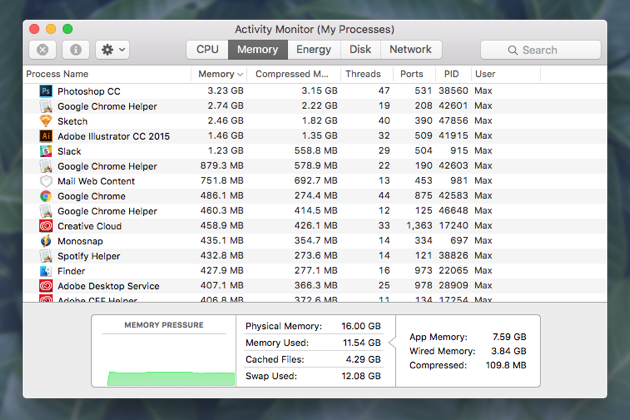
If you’ll take a look at all the processes running in the Network pane of the Activity Monitor, half of them will probably not make any sense or are probably too complicated to understand. Every application that you use on your Mac sends or receives something, be it your email, RSS reader, and more. Your computer is probably connected to the Internet 24/7, and whether you’re using it or not, your Mac is constantly exchanging data with servers elsewhere. You can switch the graph to show either, though data is probably the more useful of the two. Blue shows data received, and red shows data sent. The information at the bottom shows network usage in packets and amount of data. The Network pane shows how much data your Mac is sending or receiving over your network (and the internet). If the problems are characterized by delays, “spinning beach balls,” and occasionally a message from the operating system indicating that it can’t read or write to the drive, the odds are that the hard drive has problems. So if the available space on your Mac startup disk is less than 10 GB (absolute minimum), it’s time to free up some disk space. These problems are even more likely to occur when your startup disk is nearly full, physical RAM is exhausted, and free disk space is consumed by swap files. RELATED: How to Free Up Disk Space on a Mac


If the process is “Not Responding” then wait for few minutes to see if it either returns to a normal operation or crashes. If you look at Activity Monitor and an app is acting strangely–like using 100% of your CPU when it shouldn’t be–then something may be wrong. A Web browser may show high CPU usage while rendering or displaying multimedia content, like videos.Kernel task helps manage your Mac’s temperature by making the CPU less available to processes that are using the CPU intensely.

Occasionally, you will see a process named “kernel_task” using a large percentage of your CPU, often when your Mac’s fans are blowing.This is usually normal behavior (unless it’s all the time). Processes associated with Spotlight can show an extended spike in CPU usage during indexing.


 0 kommentar(er)
0 kommentar(er)
